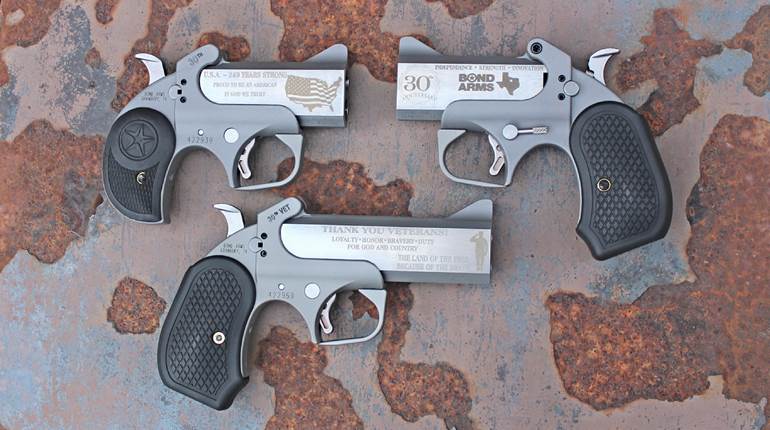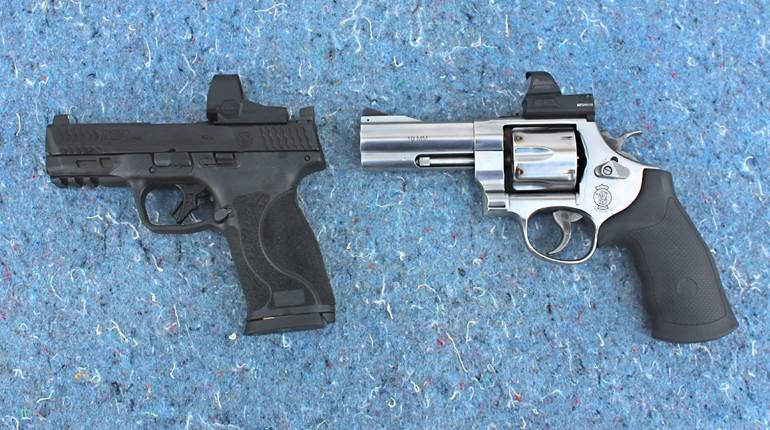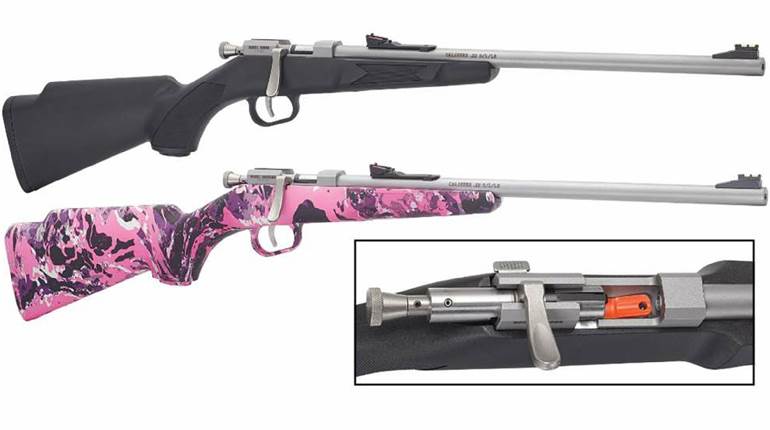
A while back I approached my editor with the idea of testing out a single-action revolver as a concealed-carry handgun. Now, before anyone gets too upset with this proposition, let me clarify my reasoning a bit. Every defensive handgun has its weaknesses. Single-action revolvers hold fewer rounds, are slower to reload and must be manually cocked for each shot fired. However, this handgun design has over 150 years of field testing to prove its reliability. Even in the harshest conditions, well-made single-actions have fired when more complicated guns have failed.
Folks who've spent much time behind these revolvers know how naturally they point. A well-balanced model becomes an extension of the shooting arm in a way that few semi-autos do. This point-ability is important in close-range defensive situations with little or no time available to acquire the sights. Finally, single-action wheelguns can be chambered for potent defensive calibers. Large handgun cartridges like the .45 Colt and .44 Spl. used to be loaded with soft lead slugs and black powder, but several cartridge companies offer updated versions of these rounds loaded with the latest defensive bullet designs. This makes a single-action more flexible since it can be loaded for four-legged threats as well as the two-legged variety. Reliable, natural pointing and powerful are the qualities that make sense in a defensive firearm.
The main hitch in considering this idea for a review was finding the right gun for the job. These days most single-action revolvers fall into one of two categories, and neither is very conducive to concealed carry. On the one hand are full-sized replicas of the original wheeled hip-riders of the Wild West, which tend to be a little too large for easy carry. The others are hunting guns chambered for magnum cartridges. They're terrific for sacking big bucks but over-powered for self-defense. With no prospects for this test immediately forthcoming, the project was put on hold.
It was at this year's SHOT Show in Las Vegas, Nev., when this review suddenly sprang back to life. I took a few minutes to stop by the Freedom Arms booth and speak with the President of the company, Mr. Bob Baker. On display were various configurations of the company’s ground-breaking Model 83 single-action revolver and the recently released Single Shot break-action pistol. Nestled in among these shooting gems was a custom Model 97 that caught my eye.
The Model 97 is a handy five-shot single-action revolver that's ideal for use as a trail gun, or in this case, concealed carry. With the exception of the sights and grip panels the gun is made entirely of satin-finished stainless steel. It’s fitted with a transfer-bar safety system mounted in the hammer, instead of the frame, allowing the gun to be safely carried with all of the chambers loaded. The Model 97 is available in a variety of calibers, including .357 Mag., .41 Mag. and .44 Spl.
The model on the show-room table was a .45 Colt sporting several in-house custom features. The most notable was a non-standard reduced barrel length of 3.5 inches. Unlike some of the shortened single-actions that have the ejector rod and housing removed, Freedom Arms developed a cleaver ejector rod lever that swings out and around the head of the cylinder base pin. This allows the ejector to work in a practical fashion despite the shorter barrel.
The gun was topped off with Freedom Arms’ Express Sights, which consist of an adjustable V-notch rear sight and a brass front-sight blade. The strong, resin-bonded Winewood grips were fitted to a round-butt grip frame. The gun had also received an in-house trigger job to further smooth and reduce the weight of the trigger pull. With an unloaded weight of 33.76 ounces, the rounded grip and short barrel dropped this very slick revolver into the medium-size carry revolver category.
The fit and finish of the metallic and wooden components were flawless. The movements of the action were as tight and precise as a Swiss clock. I asked if it could be fitted with a .45 ACP cylinder to provide additional defensive ammunition options, ammunition compatibility with other guns and reduced cost practice. The answer was yes, it could.
All in all, this Model 97 was just what I had been looking for in a single-action carry revolver, with a few more touches I hadn't thought of. I asked Bob when a gun like this one could be made available for me to test drive. He said if I was willing to wait a bit, I could test run the gun I held in my hands with a .45 ACP cylinder and one of the Freedom Arms crossdraw, high-ride holsters thrown in as well. I waited impatiently for the revolver to arrive.
As expected, the Model 97 ran flawlessly at the range with all the rounds tested in both calibers. With such tight tolerances, I wondered if the gun might start to bind up after a while. Even when the gun was hot to the touch and dirty from the number of rounds fired, no malfunctions occurred. Removing spent cartridge cases from the cylinders was effortless, with much of the brass dropping free without the assistance of the ejector rod.
The crisp, single-action trigger tipped the digital trigger gauge at 3 pounds, 5 ounces, but it felt lighter. The Express Sights system took a little getting used to since most of my time has been spent looking down the barrels of handguns fitted with Millet and three-dot configurations. But as I got the hang of them, the sights proved to be quick and easy to use at defensive distances.
Because this short-barreled revolver was tested as a defensive handgun, the ammunition selected for testing reflected that purpose. However, Freedom Arms revolvers are capable of handling hotter loads than those represented here. Factory loaded .45 Colt and .45 ACP ammunition with a +P rating can be safely fired in the Model 97. Increased pressure handloaded ammunition rated in popular loading manuals as safe to fire in strong modern handguns, like the Ruger and Thompson/Center offerings, are also acceptable. A key dimension to check on the .45 Colt cartridges you wish to shoot is the overall length (OAL). The rounds must be 1.6 inches or less in length in order to fit into the slightly shorter Model 97 cylinder.
Informal testing from a bench rest at 7 yards produced sub 1-inch ragged holes in the targets with a variety of ammunition. Shooting free-hand defensive drills also produced nice, tight groups at this distance. The formal accuracy testing was conducted from a bench rest at 25 yards using five consecutive, five-shot groups.
Generally speaking, most of the guns produced by Freedom Arms tend to be used for hunting and other long-range handgun shooting events because of their excellent level of accuracy. With the abbreviated barrel and iron sights it didn’t seem realistic to expect this particular Model 97 to produce the same kinds of groups as the full-size Freedom Arms models. However, the results were far from disappointing. With the .45 Colt cylinder installed, the two best single groups of 2 inches were produced using Hornady Critical Defense 185-grain FTX and Winchester Supreme Elite 225-grain PDX1 loads. Group averages included 2.3 inches for the Winchester load, 2.4 inches for the Hornady and 2.55-inch groups for DoubleTap 160-grain Barnes Tac-XP hollow points.
Switching over to the .45 ACP cylinder is a simple process of opening the loading gate and verifying the cylinder is completely unloaded, loosening the cylinder base pin retention screw, removing the base pin, removing the .45 Colt cylinder and reversing the process with the .45 ACP cylinder in place. The tight tolerances of the hand-fitted cylinder kept the accuracy of the shorter .45 ACP cartridge in line with the .45 Colt rounds. The best single five-shot group of 2 inches was produced with DoubleTap 185-grain Nosler jacketed hollow points. Group averages included 2.4 inches for the DoubleTap load, 2.45 inches produced by Hornady Custom 200-grain XTP hollow points and 2.6 inches for HPR Hyper Clean 230-grain jacketed hollow points. This level of accuracy is exceptional from a revolver, but even more so from a nearly snub-nosed 3.5 inch barrel.
To say I was impressed by the Freedom Arms in-house custom Model 97 revolver would be to understate the shooting experience. The trigger, balance and shaping of the grip make it a very difficult gun to put down. This revolver offers an excellent set of features from the factory usually reserved for much more expensive custom-built revolvers. Plenty of solid, workable .45 Colt single-actions are available for less money, but few demonstrate the level of craftsmanship found in the Freedom Arms offerings.
Should someone pack a single-action revolver for personal protection? Considering how many folks are walking around with five-shot .38 Spls. and six-shot pocket-size .380s in tow, it was hard to feel under armed carrying five .45 caliber hollow points ready to launch from a gun that I had complete confidence in. As with any defensive handgun selection, it all comes down to carefully researching your options to find the best fit for you. What I can say without any reservation is this: However you choose to use a single-action revolver, Freedom Arms provides an opportunity to get what you pay for.
Manufacturer: Freedom Arms, Inc.; Freedomarms.com
Model: Model 97, Premier Grade
Action: Single-Action Revolver
Caliber: .45 Colt, .45 ACP Using Optional Conversion Cylinder
Finish: Stainless Steel
Grips: Laminated Winewood
Sights: Express Sights
Barrel Length: 3.5”
Overall Length: 8.5”
Height: 5.37”
Width: 1.56”
Weight: 33.76 ozs.
Capacity: 5 Rounds
Twist: 1:24” RH
Suggested Retail Price: Base Gun $ 1750, Optional Cylinder $295





































